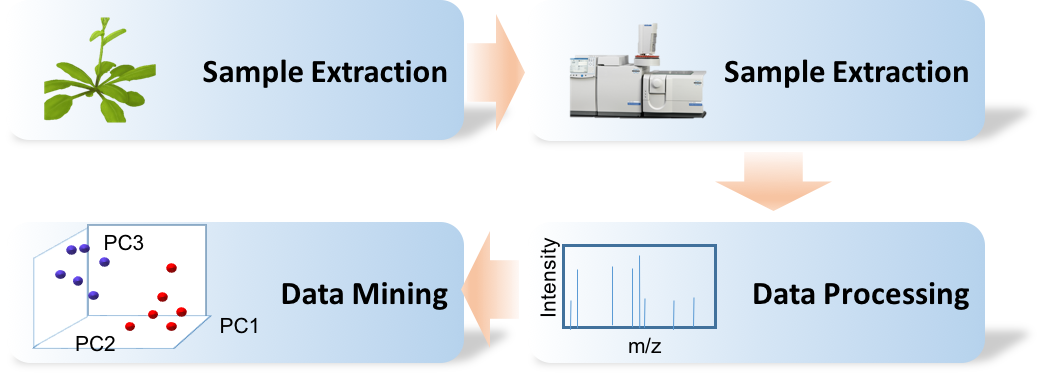Plant Non-targeted Lipidomics
Lipids play important roles in plants; they are structural components of cell membranes, major storage substances in seeds, pigments for energy capture in leaves, and signaling molecules for cell communication.
With the development of lipidomics, mass spectrometry analysis of plant lipids has also significantly improved. Plant lipidomics is defined as the analysis of plant lipids using mass spectrometry. Various methods, including ESI-MS, ESI-MS/MS, and GC-MS, have been used in plant lipidomics research. Untargeted lipid analysis can be used to detect lipid metabolic changes in response to developmental and environmental changes.
Lipids play an important role in plant growth, development, and response to environmental changes. Glycerolipids are the most abundant type of lipids in plants, including phospholipids, glycolipids, and neutral lipids. Phospholipids can be further divided into subgroups, including phosphatidylcholine (PC), phosphatidylethanolamine (PE), phosphatidylserine (PS), phosphatidylglycerol (PG), and phosphatidylinositol (PI). Glycolipids include monogalactosyldiacylglycerol (MGDG), digalactosyldiacylglycerol (DGDG), and sulfoquinovosyldiacylglycerol (SQDG). The composition of these compounds varies among different plant tissues and species and is strongly influenced by nutrients and the environment.

Plant Untargeted Lipidomics
Applications of Plant Untargeted Lipidomics
Stress-induced changes in plant lipidomics;
Injury-induced changes in plant lipidomics;
Developmental and senescence-induced changes in plant lipidomics, etc.
Instruments used for identifying plant lipidomics include MS, GC, HPLC or LC-MS, and GC-MS. The combination of chromatographic methods (such as GC or HPLC) with MS can greatly enhance lipid coverage. As one of the widely used analytical techniques in plant lipidomics, GC-MS is used for the qualitative and quantitative analysis of a wide range of volatile and derivatized non-volatile lipids composed of 14-24 carbon atoms and containing 0-3 double bonds. Compared with LC-MS and LC-NMR, GC-MS offers the advantages of good analytical reproducibility and lower cost. In recent years, LC-MS has also been used for large-scale untargeted analysis of plant lipids.
Biotech company BGI offers reliable, fast, and cost-effective plant untargeted lipidomics analysis services based on highly stable, reproducible, and sensitive systems for separation, characterization, identification, and quantification, combined with LC-MS and GC-MS.
Related Services
Lipid Metabolomics Research
Untargeted Lipidomics
Plant Metabolomics
Untargeted Metabolomic Analysis
Targeted Metabolomics
Fatty Acids and Fatty Acid Metabolism
How to order?





